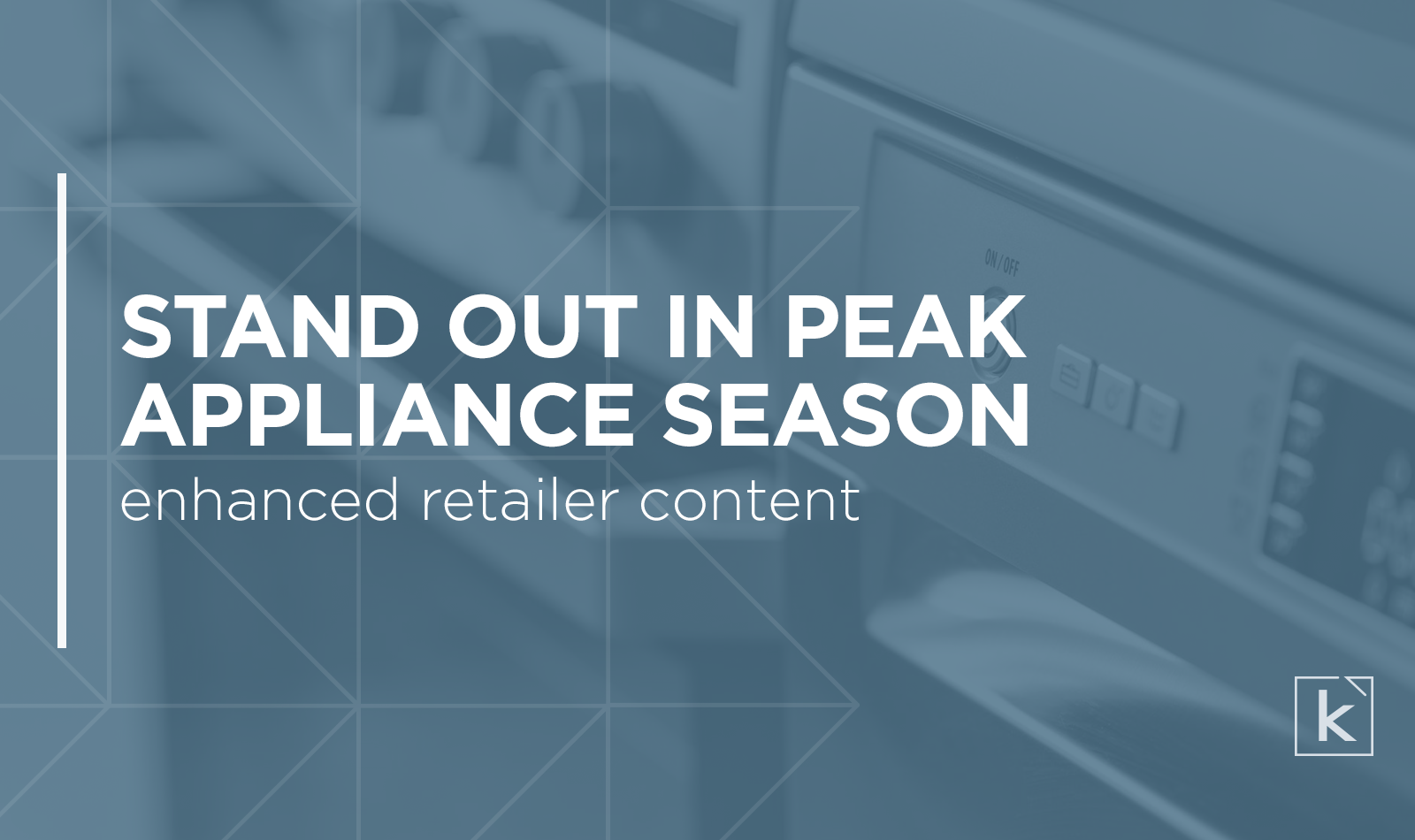
Washers to the left. Dryers to the right.
If you’re not prepared to go appliance shopping...
You might be out all night.
Admittedly, this was much catchier in our heads with a fictional beat playing along with it.
Nevertheless.
In our last blog, we delved into appliance shopping—and the dawn of the appliance shopping season—taking a look at key consumer trends and connecting the dots between what the customer wants and how brands and retailers can deliver it. A quick recap of what we found:
- Appliance shoppers are HIGH INTENT shoppers. They typically buy an appliance within a week of starting their search.
- Much of their homework is done online, and then they complete the purchase process in-store.
- Brands are keenly aware of both points one and two.
From these findings, it’s reasonable to conclude that appliance shopping season is quite different from other major shopping events like Black Friday, Cyber Monday, or Prime Day. In those cases, shoppers are predisposed to the idea of shopping and looking for deals on things they want (and often what they soon discover they want, browsing all of the available deals), but appliance shoppers are more direct and to the point. Based on their shopping behavior, they’re likely not making an impulse decision.
Which brings to us content.
Previously, we looked at product detail pages (PDP) for Home Depot and Lowe’s, the two biggest retailers in the appliance industry. They present a clean, customizable user experience; shoppers can find deals front and center; they can categorize products by feature, function, and price; and they can view it in-store and then have it delivered for free.
Content is a key piece to the puzzle, and PDPs are just one aspect. In this blog, we’re going to take a hard look at micro content: what it is, why you should be leveraging it, and how to bring it to life.
What is micro content?
Pretty straightforward subhead title, don’t you think?
We prefer to keep it simple, which is the ideal segue to talking about micro content. We know that the average internet user’s attention span is less than 10 seconds, which means we don’t have much time to capture them and relay our messaging. With appliance shopping, this is even more precarious; you’re dealing with highly motivated customers who are looking to close the deal quickly. The job of micro content is to boil down a larger process and sell them on choosing you over someone else.
Micro content, by definition, is “written copy, imagery and/or video content that can be consumed in 10–30 seconds or less” (via Brafton). It’s the bigger meal, but broken out into small courses. You’re still getting the finished product, just in different spurts.
Utilizing micro content to bring in appliance shoppers is a creative, effective tactic. There’s a lot of information out there, and the number of product options is staggering (did you know you can search exclusively for French-door refrigerators?); micro content boils down a complex and often expensive purchase decision into the need-to-know, difference-making stuff.
Micro content can consist of graphs and charts, short videos, interactive media (GIFs), illustrations and renderings, and short text blurbs. There are no hard and fast rules for what micro content should be—it’s more about what it should do.
Here are some micro content musts:
- Micro content should stand alone, yet still make sense.
- It should leverage existing content.
- It should be the most appealing form of content you create.
Got all that? Sweet. Now, we’ll integrate micro content into the appliance shopping experience.
Micro in practice
We’ve referenced Home Depot previously, and we’re going to do it again.
They do a tremendous job of turning the “bigness” of buying an appliance into something approachable and easy. Once you click on a listing, they have it broken down into digestible pieces that, viewed separately, all fit together and ladder up to the product listing.
And, after you’ve made your decision, their micro content still works. Getting the appliance into your home is probably the most important part of the process, but look how easy it is:
 Clicking a listing for an LG dryer from Lowe’s brings up a user-friendly information submenu, full of micro content in different categories like reviews, how-tos, and more:
Clicking a listing for an LG dryer from Lowe’s brings up a user-friendly information submenu, full of micro content in different categories like reviews, how-tos, and more:

What can we take away from this? Micro content can be any number of things, but at the end of the day, it has to deliver immediate and tangible value to customers. In appliance shopping, you have a limited amount of time to make an impact with your content because the purchase window is smaller.
The best approach to a micro content strategy is to start with your tentpole assets: what creative, print, email, video, etc. do you have for your products? From that content, how can you extract the important stuff and deliver it in a way that convinces customers to choose you over another retailer?
An experienced content partner can do that by creating thematic content that lives on all platforms, then strategizing how to use the micro content to keep the buying cycle going.



